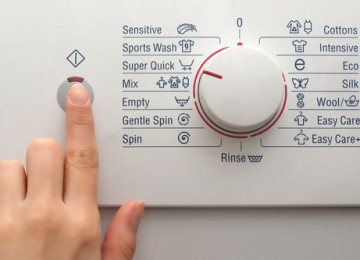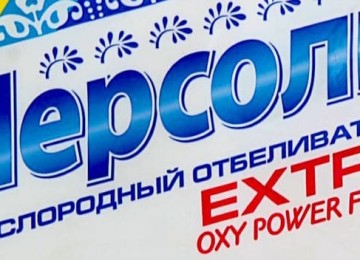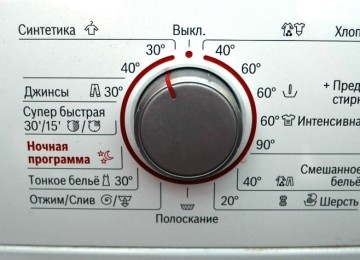When choosing a method for removing juice stains from clothes or shoes, consider how long ago the item was stained. In addition, you need to select a product, knowing the characteristics of the fruit or vegetable from which the drink was made.
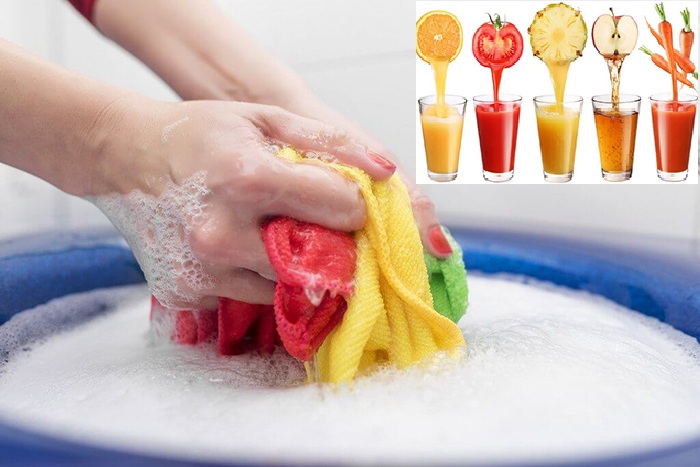
About methods of cleaning fabrics from juices
You can clean clothes from stains using special industrial products or folk methods.
Folk remedies
Using folk recipes is often cheaper than buying store-bought chemicals. If you use them right away, you can often remove the stain without using industrial products. The disadvantage is the lack of universal methods. You will have to select a product to remove the fingerprint, taking into account the chemical composition of the drink.
You can clean a product with home remedies only if you are completely confident in the result or are ready to part with the damaged product.
If an expensive item gets dirty, it is better to go to a dry cleaner. Choose your product for children's clothing with care. A child may experience an allergic reaction due to the use of certain compounds.
Household chemicals
Most often, industrial products help quickly get rid of stains. Their main advantage is the ability to use them on products of any color. If you use the stain remover according to the instructions, you will be able to remove even stubborn, old stains.
To remove marks left a few minutes ago, you can use any washing powder.
The cloth is slightly moistened with water, after which the dirty area is covered with the product and rubbed from the edges to the middle. At the end of the procedure, it is recommended to machine wash the product followed by rinsing.
Bleach is suitable for treating light-colored T-shirts, skirts or dresses. It is better to buy a composition with active oxygen, since the active substance does not lead to a change in the shade of the fabric or damage to clothing.
Never leave chemicals on fabric longer than recommended. The compositions can corrode the material and negatively affect the quality of the print.
What's better
Industrial products cope better with pollution. They are more effective and versatile, which is why people often prefer them. The disadvantage of many folk remedies is the unpleasant odor.
When using vinegar, citric acid and a number of other compounds, you will have to use rubber gloves, since the substances can corrode the skin.
Folk remedies (for example, salt, soda) are good to use in the initial stages.With their help, you can carry out primary processing and prevent the pigment from penetrating into the deep layers of the fabric if it is not possible to wash the clothes immediately.
The main advantage of home methods is accessibility and low cost. Every housewife has suitable substances in her medicine cabinet or kitchen.
.jpg) Each housewife decides for herself what exactly to use against stains.
Each housewife decides for herself what exactly to use against stains.
Features of removing juice from different tissues: precautions
Consider the characteristics of the fabric when choosing a cleaning product.
Natural fabrics
White cotton or linen items without patterns or designs can be washed with bleach. For natural fabrics, formulations containing chlorine are suitable. Cotton clothing can be washed at high temperatures. The best home remedies are vodka, 9% table vinegar, and hydrogen peroxide.
Thin delicate
If the item is made of thin, soft fabrics, you will have to be careful when removing stains. Avoid exposure to hot solutions as they may distort the fibers. It is better to mix ammonia and water in equal proportions, spot-treat the print, then rinse off after 5 minutes and wash with laundry soap.
You can use milk or whey. The item is immersed in a heated drink, kept for several minutes, and then washed.
If you use cold products, you will have to soak your clothes in it for 1 hour. You can get rid of fruit pigment using kefir or yogurt.
To do this, the fermented milk product is distributed pointwise over the stain and left for 0.5 hours. The treated product should be washed with a powder that does not contain chlorine.
.jpg)
Jeans
Avoid using lemon juice or acid.Because of them, the area on which the imprint was left will turn pale and fade. It is best to immediately soak the jeans in cool water and wash them by hand after a quarter of an hour. Often machine washing with the addition of any powder helps remove a fresh stain.
Synthetics
If the stain was left by berry juice, immediately after it appears, remove the item and soak in boiling water. This method will help get rid of even blueberry and blackberry pigments.
It is better to remove fruit prints using a pan of boiling water.
Pull the item so that the dirty area is above the container and steam passes through the fabric. Then treat the remainder of the mark with table vinegar and wash the product.
White things
If dirt appears on white fabric, you need to begin removing it as quickly as possible.
Follow a number of recommendations to make stain removal easier:
- Do not rub the juice into your clothes. This way the pigment will penetrate into the deep layers of the fabric, from where it will then be difficult to clean out.
- Avoid laundry soap and products containing alkali. They will only make the problem worse.
- First place the fabric under cold running water.
- If you use store-bought products, first test their effect on a small, inconspicuous area.
- It is better to increase the concentration of the powder or gel gradually. Sometimes a small amount of the composition is enough to get rid of contaminants.
- Start washing, moving from the edges of the stain to the center. This way you will avoid the appearance of stains on your clothes.
- Avoid using chlorine bleaches. Because of them, the item may acquire a gray or yellow tint.
- Apply the product from the wrong side.It is recommended to place a paper towel folded in several layers under the product so as not to accidentally stain other areas of the fabric.
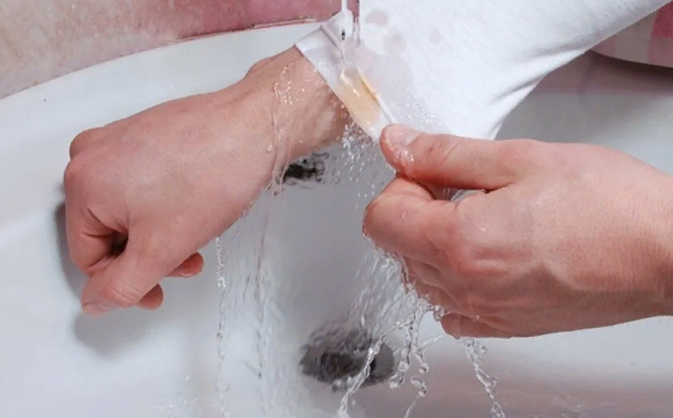
Colored things
It is more difficult to remove pigments from colored clothes, since it is necessary to preserve the pattern. Gentle methods include treatment with glycerin and egg yolk taken in equal proportions. The mixture is kept for a quarter of an hour, after which it is rinsed off and the item is machine washed.
Preparation before removing stains
If you want to get rid of an old stain, first remove dust from the product. It will interfere with the processing process. It is recommended to first mechanically clean the stain. It is best to use a dry brush for this. The duration of exposure depends on the degree of contamination.
First test the chosen method on a small, inconspicuous area. Make sure that the fabric is not damaged by the cleaning solution.
When choosing a commercial product, make sure it is suitable for the stained fabric. Some stain removers are used only for colored or white wardrobe items. Read the instructions for use. Consider the temperature at which the product will begin to work.
Be sure to read the information on the label. Follow the manufacturer's recommendations when selecting household chemicals and temperature conditions. Violation of these rules will result in damage to the product.
If you find a “dry clean only” label, take the clothing to a dry cleaner. If you try to remove the contamination yourself, you will ruin the item.
Methods for removing fresh juice stains
If you start removing the stain right away, you can get by with inexpensive folk remedies.
Cold water
Cold liquid works well to remove traces of pomegranate juice.Pour 3 liters of water into a basin, add 2 tsp. baking soda, soak the item for 40-50 minutes. Then wash with powder. This option is suitable for delicate fabrics, the structure of which can be damaged when exposed to high temperatures.
Boiling water
The technique is often used to remove fresh stains from a child’s belongings. This method is not suitable for delicate fabrics, since the product may deteriorate when exposed to hot liquid.
Prepare 3-4 liters of boiling water. Pull the product onto a pan or basin so that the stained area is located in the center. Pour boiling water over the stain in a thin stream until the pigment begins to lighten. Then apply a small amount of 9% table vinegar to a cotton pad and wipe away the juice stain. Complete the procedure by machine washing.
.jpg)
Baking soda
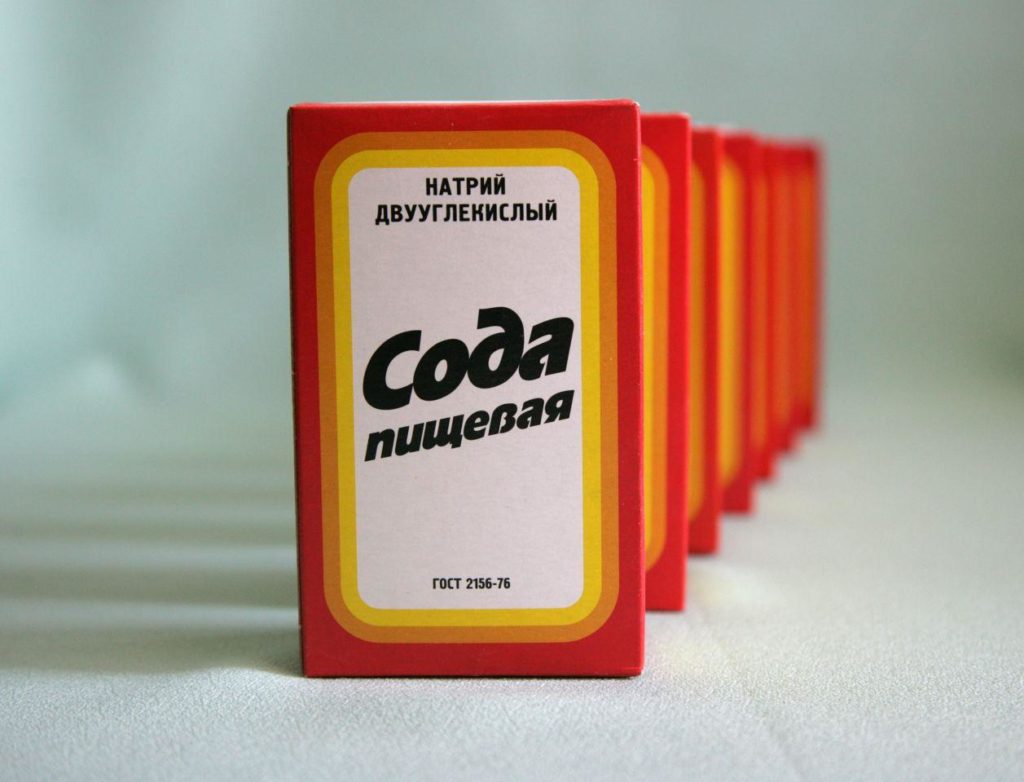
The product works well against sea buckthorn juice. Fresh contamination is generously sprinkled with soda, left for 10 minutes, and washed with cool water. If necessary, the procedure is repeated 2-3 times. Then the item is watered with dishwashing detergent and machine washed after 40 minutes.
Laundry soap
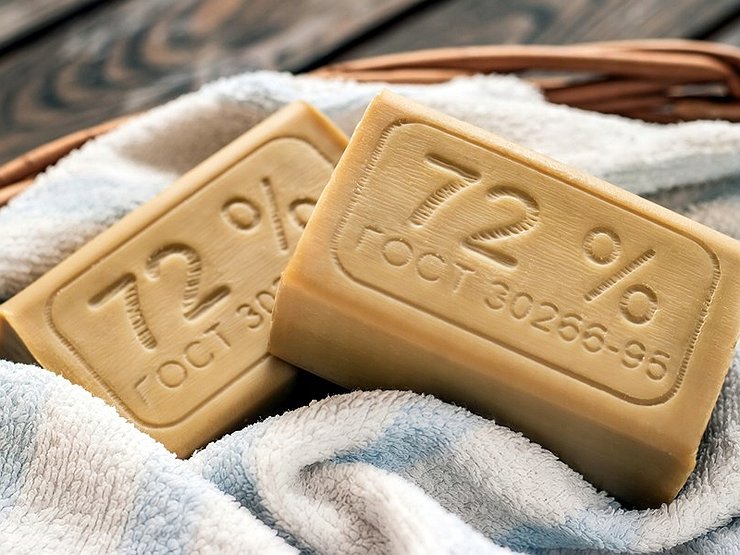
You cannot rub things with a bar, as the pigment may stick to the fabric. Soap, however, works well to remove newly created stains. To do this, it is ground on a grater and whipped into foam in warm water.
Wardrobe items are placed in the resulting solution and left there for half an hour. To wash your child's clothes, it is recommended to use special baby soap.
Yolk and glycerin
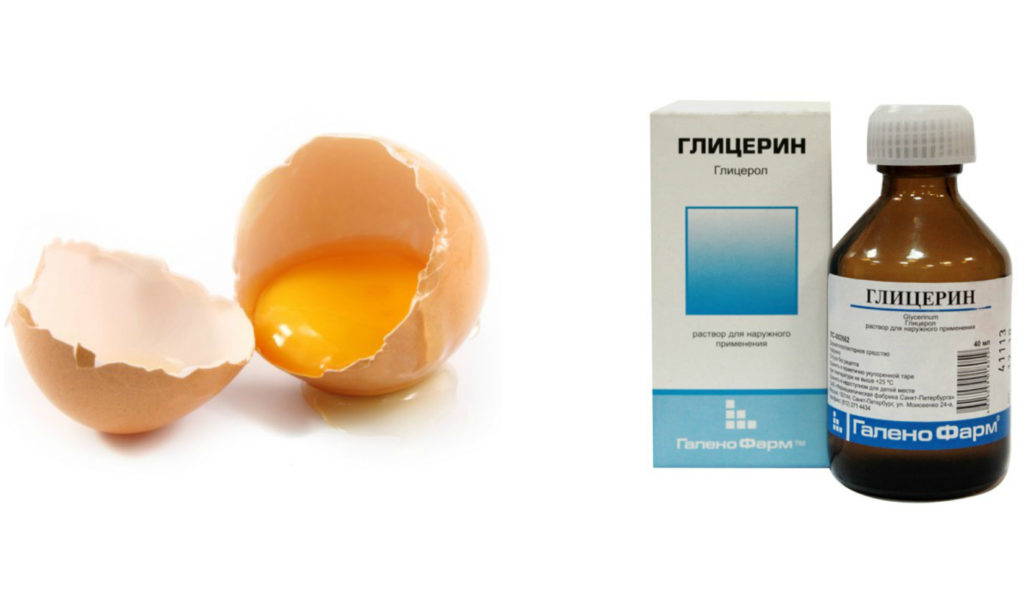
Glycerin helps remove traces of tomato juice. The substance is mixed in equal proportions with the yolk of a chicken egg. The resulting mass is distributed over the print and left for 2-4 hours.Then remove any remaining cleaning composition with a clean cloth or paper towel, and rinse the cloth under running water at room temperature.
Stain remover
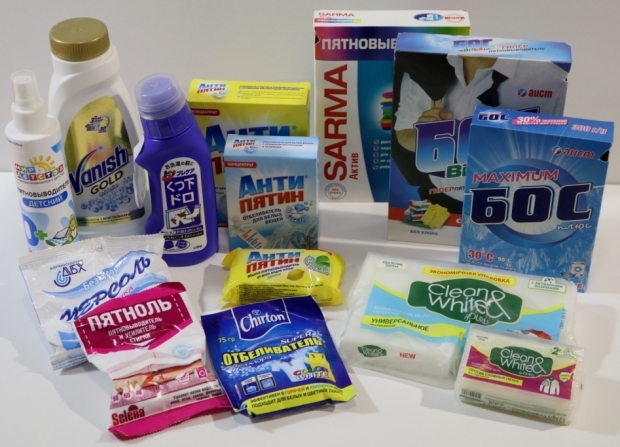
Hydrogen peroxide is considered an effective stain remover. The damaged area is moistened with an antiseptic and then left for 10 minutes. It is better not to use this product on brightly colored clothing, as the fabric may fade or turn pale.
For snow-white items, the use of concentrate is allowed. If you need to wash light-colored clothes, it is better to dilute peroxide with water in equal proportions.
Salt
Sprinkle a thick layer of salt over the stained area to absorb the drink. As you color, remove the seasoning, then add fresh seasoning. When the pigment is completely removed, wash the item in a suitable mode.
.jpg)
Alcohol
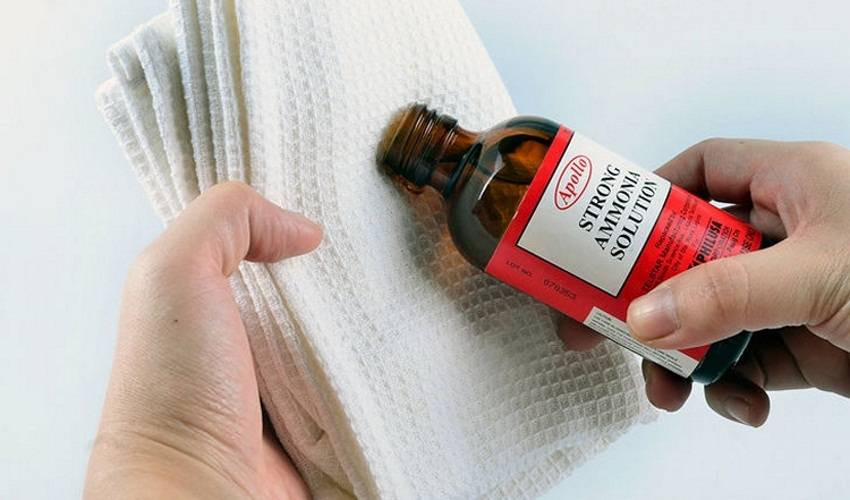
When using ammonia, take into account the characteristics of contamination. To remove traces of less pigmented liquids, such as currant juice, mix the substance with hydrogen peroxide in equal proportions, then apply to the stained area for 10 minutes and rinse with cold water.
Juices that are difficult to remove (for example, beetroot or cherry) are removed with pure alcohol. The product is applied to the stain using a cotton swab, after which the item is left for 2 hours. Then the product is thoroughly rinsed under running water.
Lemon acid
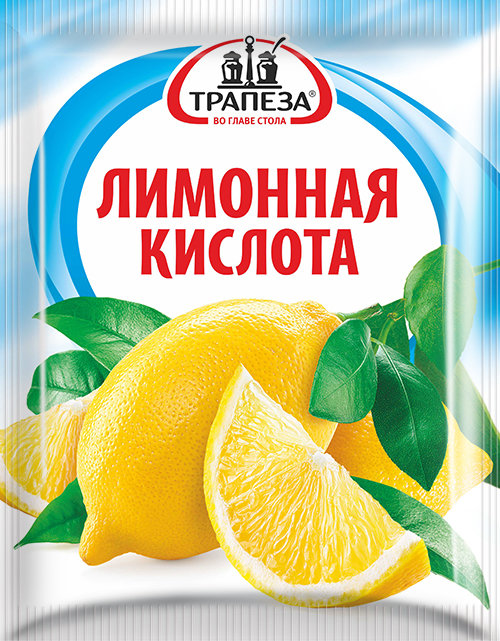
The method helps when you need to get rid of dandelion juice. Mix 2 g of citric acid with 20 ml of medical alcohol, heat the mixture to +40°C.
Immerse the stained area in the mixture and leave it until the stain disappears completely. Then rinse the mark using warm water and wipe again with a weak alcohol solution.
Rinse the product in cool water with a small amount of citric acid. If alcohol is not available at home, you can replace it with table vinegar. The ratio of components should be 1:3.
Citric acid helps get rid of stains that appear after removing old berry and fruit stains. Dilute 1 tbsp. l. powder in 1 liter of clean water, then place the item in the resulting product for half an hour. You can add 1 tbsp. l. soap shavings to enhance the effect.
How to remove stubborn juice stains
If the stain is not detected immediately, it becomes more difficult to get rid of. There are, however, a number of effective methods to destroy stubborn prints.
Ethanol
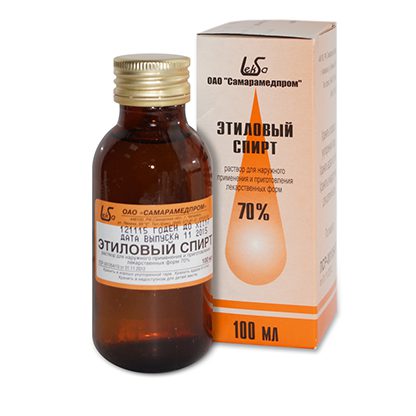
Vodka is mixed with lemon juice in equal proportions. The soiled product is laid out on a smooth surface, after which the problem area is doused with steam from the iron.
The prepared composition is applied to the stain, left for 20 minutes, and washed off. If the stain is not washed off, spray it with a solution of 1 tbsp. l. ammonia and 100 ml of water, then wash with laundry soap.
A mixture of vodka and glycerin is suitable for removing bright prints. The substances are mixed in equal proportions, then 1 raw egg yolk is added. Spread the mixture in a thick layer over the dirty area and leave for 3-5 hours. The cleaned item is washed by hand in a solution of washing powder.
Table vinegar with soda
This cleaning method will help get rid of not only stains, but also unpleasant odors. Mix 300 ml of heated water, 1 tbsp. l. vinegar, 1 tbsp. l. soda, 1 tsp. washing powder.
Stir thoroughly. The bulk components must be completely dissolved.Pour the mixture into a spray bottle, spray on the affected area, and leave for 10 minutes. Then wipe with a paper towel.
.jpg)
Boric acid
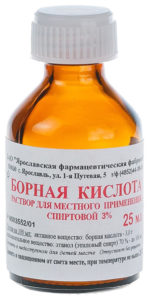
Boric acid helps restore whiteness to light-colored items. The pharmaceutical product also removes unpleasant odors from clothes. Dilute 2 tbsp. l. substances in 3 liters of warm water. Soak the clothes in the resulting solution for 20-30 minutes. Then rinse and machine wash.
Toothpaste
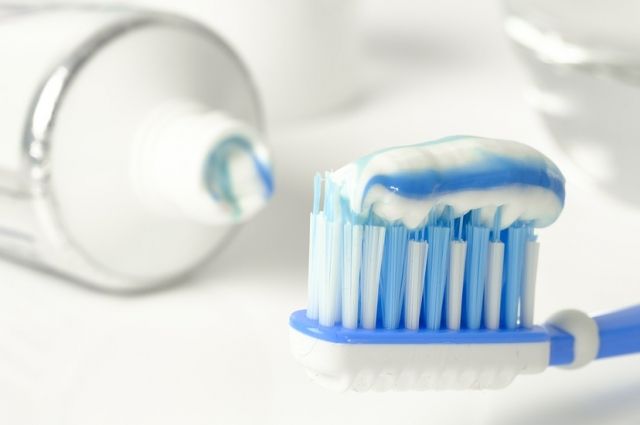
Toothpaste or powder is used to get rid of persistent pigments. They remove traces of tomatoes, cherries, and blueberries. The stain is lightly moistened with water, after which a thick layer of teeth cleaning agent is applied to it. The item is left for 3-4 hours, then washed by hand.
Starch

Lightly moisten the stained area, then sprinkle generously with potato starch. Be careful not to get it on a clean cloth. Leave the item for 30-60 minutes, then wash first by hand and then in a machine.
Ammonia
First, make a solution of citric acid, lemon juice, and table salt, taken in equal proportions. The mixture is brought to homogeneity, after which it is distributed over the dirty area pre-treated with water vapor.
After 15 minutes, wash off the mixture. Faded spots are wiped with a cotton swab dipped in pure ammonia. When the pigment is completely removed, the clothes are rinsed in cold water.
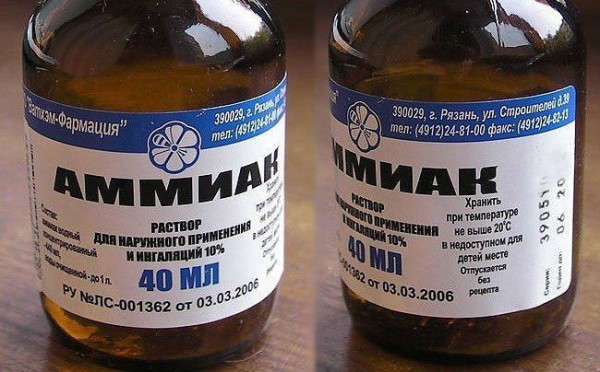
Potassium permangantsovka
Potassium permanganate should be used with caution. Be careful not to get the product on clean fabric, as it can also leave stubborn stains.
Dissolve a few crystals in water to create a beet-colored liquid. You can add a small amount of vinegar. Then apply to the dirty area and leave for 15-20 minutes.
In this case, the clothing will darken in the treated area. Blot the fabric with a cotton pad soaked in hydrogen peroxide to restore the original color. Then wash with laundry soap.
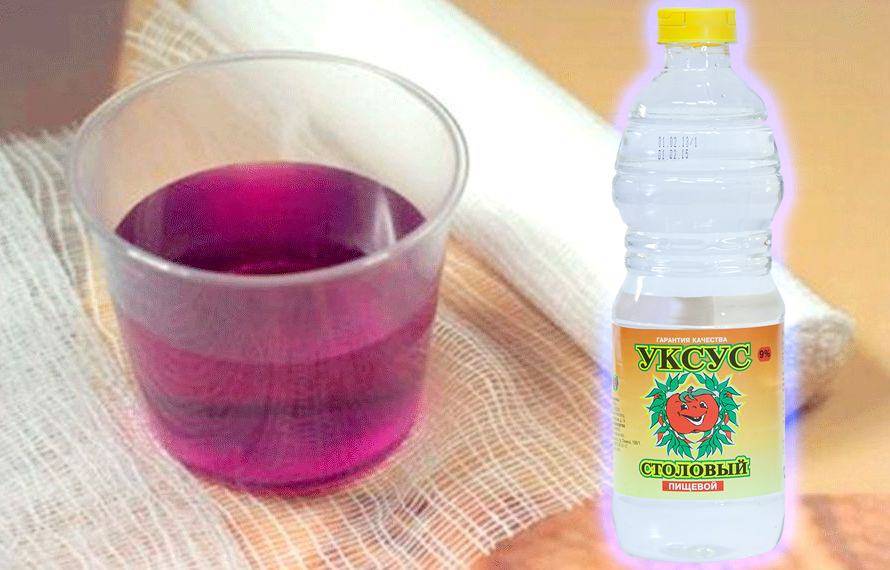
Hydroperite

First, wash the item that has a dried stain on it. Then take a small amount of hydroperite and pour it over the print. Leave for 15-40 minutes, then wash the product again with laundry soap.
Which cases require a special approach?
Most stain removers cope with stains, regardless of what fruit the juice was made from. Each drink, however, has its own composition, so you can use special products to make getting rid of pigment easier.
Traces of cherry juice can be easily removed with 70% vinegar. It is diluted with water in a ratio of 1:4, after which it is applied to the stain for 1/3 hour.
The procedure is completed by machine washing. The technique is only suitable for processing unpainted products. This method allows you to get rid of even old, difficult to remove marks.
Citrus
Stains from oranges and tangerines are removed in several stages. First, the soiled fabric is kept under steam for 2-3 minutes. Then mix vodka and table vinegar in equal proportions.
Rub the orange juice stain with the mixture from the edges to the central part. The process is completed by wiping off the remaining pigment with a cotton swab dipped in ammonia.
Also, such stains can be easily removed with glycerin. First, sprinkle the stained area with starch or flour. Then glycerin is applied to it in a thick layer.
The item is left for 1.5-2 hours, after which it is rinsed thoroughly. In case of heavy contamination, repeat 2-3 times.Treatment should begin as quickly as possible, since citrus juice is difficult to remove from tissues.
.jpg)
Pomegranate and grape juice
Stains from grape or pomegranate juice can be easily removed with alcohol-containing compounds. First, 15 ml of medical alcohol is mixed with 2 g of citric acid.
The resulting mixture is distributed over the dirty area and left for 3-5 minutes. Sometimes at this stage it is possible to completely remove the pigment. If traces remain, they are wiped with ammonia diluted with water in a ratio of 1:3. Then the stain is moistened with a solution of 1 tbsp. l. vinegar and 200 ml of water. When the print fades, the item is washed in the usual way.
Apples
To get rid of apple pigment, soak the product in warm water for an hour. Then pour the damaged area with 1 tbsp. l. vinegar diluted in 200 ml of boiling water. Afterwards, wash your clothes in the machine.
If an apple juice stain remains on a white, light-colored item, you can rub it with a slice of lemon, and then rinse the area of the fabric under cool water.
The acid will help break down the pigment. Citrus fruits, however, are not recommended for use on products with patterns or bright prints.
Carrot
To remove carrot juice from colored items, make a weak solution of potassium permanganate. Then immerse clothes in it for 1 hour. It is better to wash out carrot stains on light T-shirts or dresses with lemon juice.
It is recommended that immediately after the dye gets on your clothes, place the stained part of the item under cold water to prevent the pigment from penetrating into the deeper layers of the fabric.
You can use sunflower oil. It breaks down the carotene contained in carrots. You will have to act carefully so as not to leave greasy marks on your clothes.
The method is suitable for processing only natural fabric. The oil is distributed over the contaminated area and rubbed in thoroughly. Then the print is smeared with dishwashing detergent and washed in a machine. If stains remain, hang the product in direct sunlight for 2-3 hours, then wash it again.
.jpg)
Beet
Sodium hydrosulfite helps get rid of traces of beet juice. The substance is distributed over the stained area, then watered with hydrogen peroxide.
To treat small spots, use a pipette. Then mix table vinegar with cool water in a ratio of 1:3, moisten a cotton swab in the resulting liquid and wipe the mark. It is recommended to wash the item in a machine after this.
Dishwashing detergents help a lot. The composition is distributed over the stain, after which it is allowed to dry completely. The clothes are then put into the washing machine.
To get rid of fresh dirt, you can use white bread. Place the crumb on the stain and replace it with a new one as the pigment is absorbed. When the mark fades, wash the clothes at a low temperature.
.jpg)
Household chemicals for removing juice from clothes
If folk remedies do not help get rid of the stain, you will have to use household chemicals.
The following compositions are considered the most effective:
- Vanish Oxi Action. The manufacturer offers several stain removers for clothes of different colors. Apply the gel to the stained area, leave for 15-20 minutes, then rub the desired area a little, and then wash the product. Sometimes the procedure has to be repeated 2-3 times.
- Sonett Organic Spray. Spray the product directly onto the fabric. 10 minutes after the procedure, the item is washed.
- Dry stain remover Friendly Organic.Suitable for processing colored and white clothes. Dilute the powder with water until you obtain a mushy consistency. Then apply to the stain. After 20 minutes, wash the product.
- “Eared nanny.” Hypoallergenic product for children's clothing. It is recommended to use a stain remover and washing powder of this brand in combination.
- Amway. Natural products that do not cause allergies. It is recommended to use powder and stain remover from the same manufacturer.
Some housewives use Domestos to remove old stains. It contains chlorine, so the product is contraindicated for silk. It is better to wash things made of jersey, cotton, and synthetics with it.
Be sure to test the fabric for resistance as Domestos often leaves white marks on fabrics.
The composition is diluted in a ratio of 1:2. To process white items, the concentration can be increased; for black items, it will have to be reduced. Soak a cotton pad in the solution, blot the dirt, and then immediately wash it off. Delay will result in bald spots appearing on the fabric.
Do not use large amounts of stain remover at once. First, try cleaning the item with a small amount of chemical.







